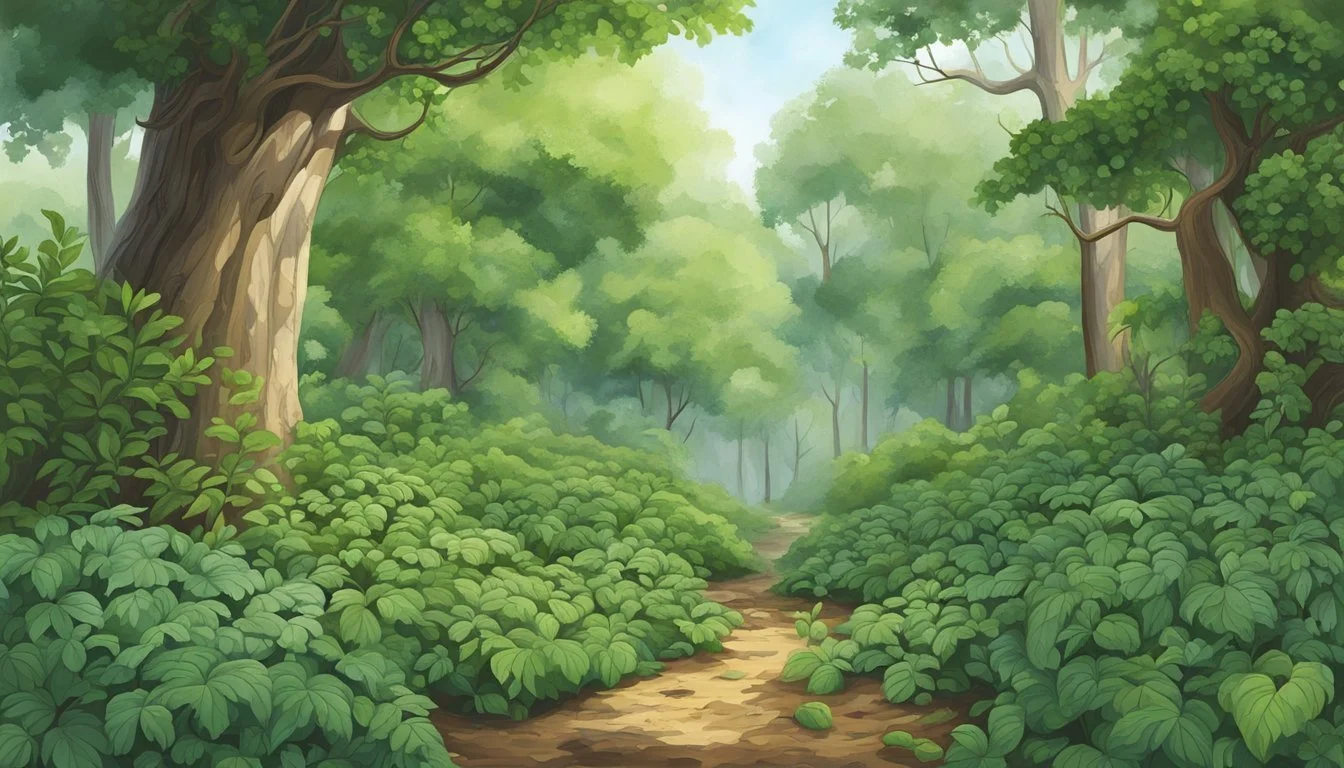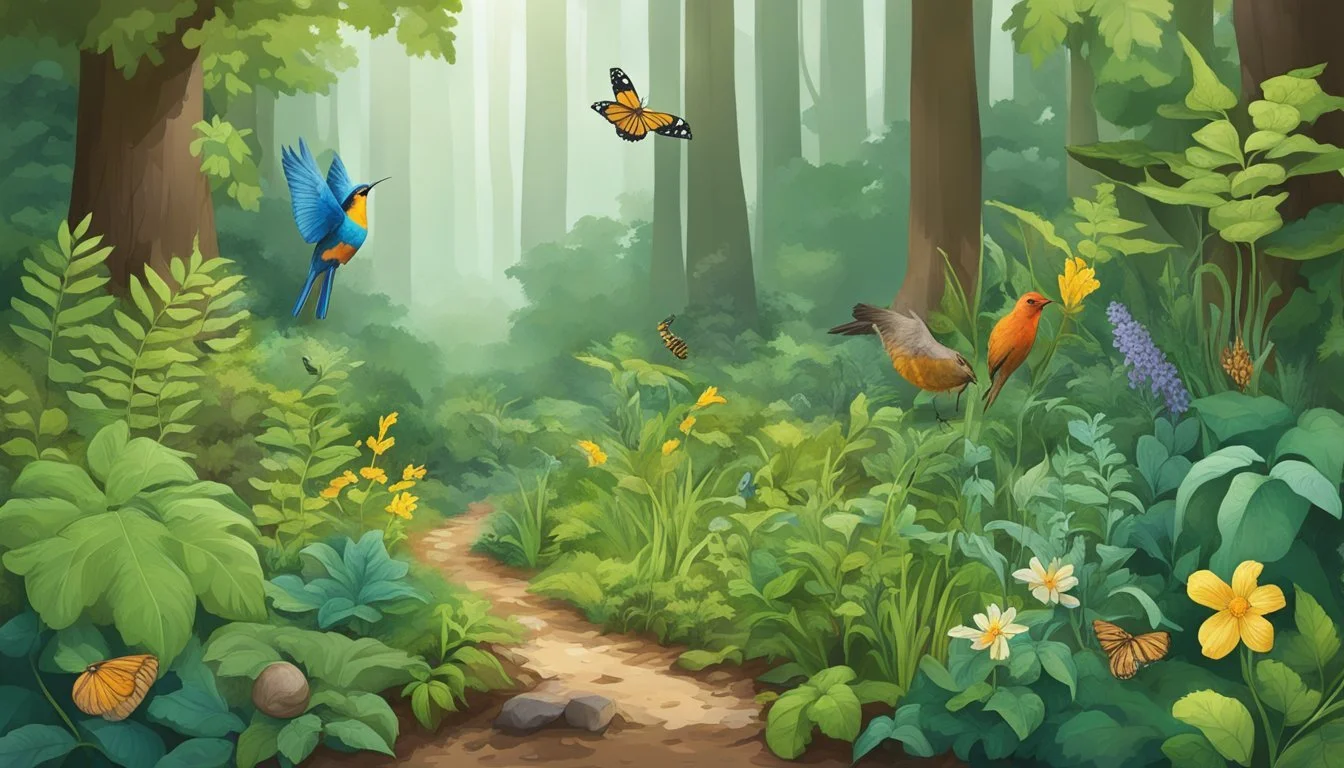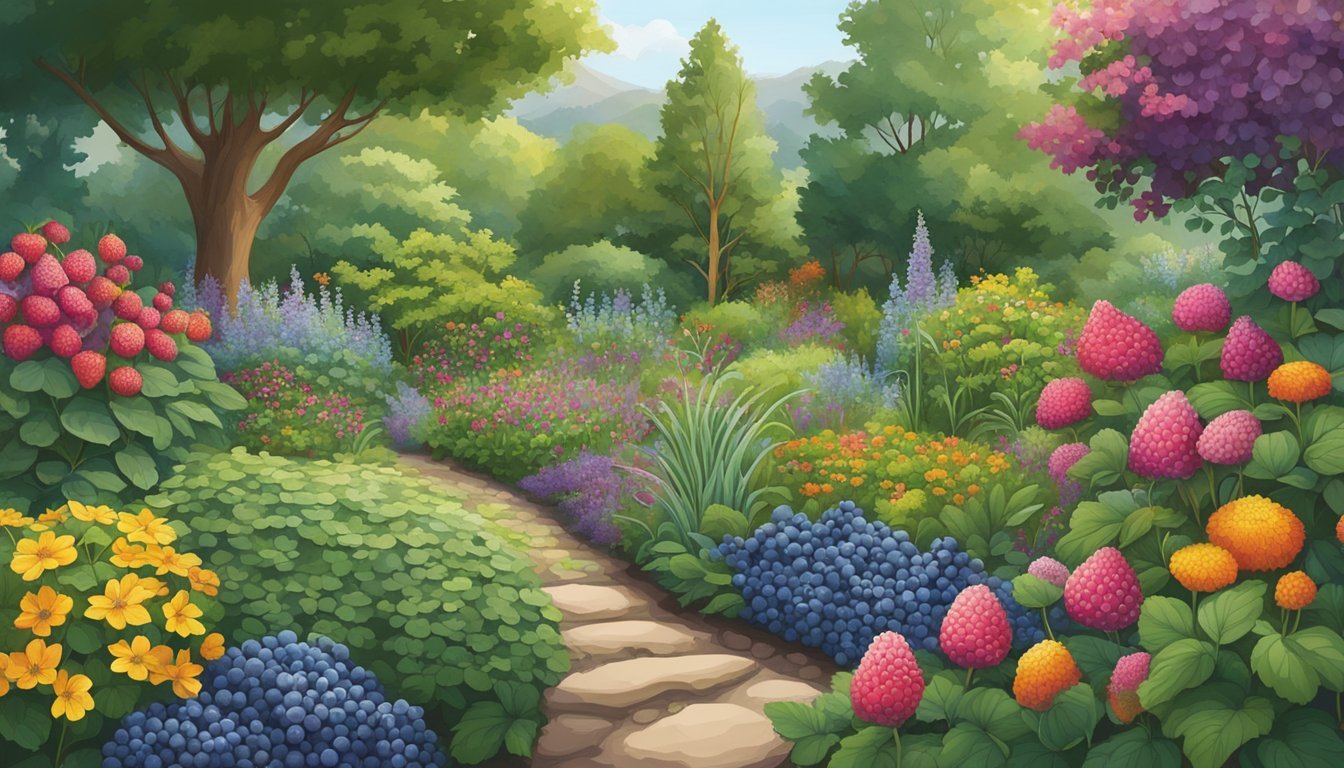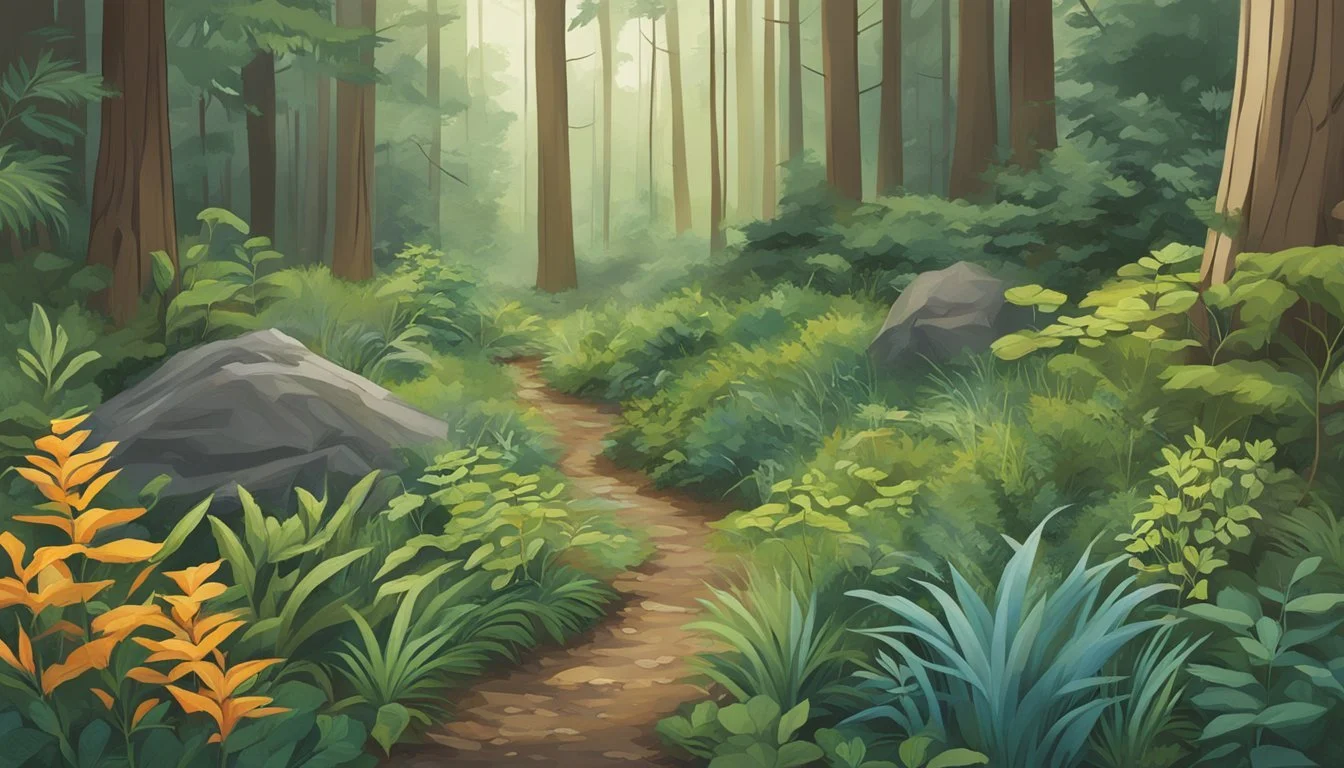Deep South Native Edible Plants
A Guide to Wild Food Sources
The Deep South of the United States, with its rich and varied ecosystems, is home to a plethora of native edible plants. From the Blue Ridge Mountains in South Carolina to the coastal plains, these regions offer a bounty of trees, shrubs, herbs, and vines that have been utilized by both wildlife and humans for generations. Knowing how to identify and forage these native plants not only provides a unique culinary experience but also promotes conservation and understanding of local ecosystems.
One prominent example is the muscadine grape (Vitis rotundifolia), a native fruit that thrives in the southern states. Revered for its robust flavor, the muscadine is often used in wines, jellies, and as a fresh fruit. Meanwhile, the wild onion (Allium Canadense) offers a familiar taste akin to its cultivated relatives and is commonly mistaken for wild garlic. Its strong onion aroma is a clear indicator of its edibility and a delightful addition to foraged meals.
For those looking to explore further, the American cranberry plant grows well in cooler climates with acidic, moist soil. These creeping woody shrubs are not only a vital link in local food chains but also offer delicious and nutritious berries. By incorporating native edible plants into your diet, you can enjoy a sustainable and enriching way to connect with the diverse flora of the Deep South.
Historical Context of Foraging in the Deep South
The history of foraging in the Deep South dates back centuries, characterized by indigenous practices and later adapted by colonial settlers. Key native edible plants such as pawpaws, American persimmons, and southern magnolias played a significant role in these traditions.
Indigenous Practices
Indigenous tribes in the Deep South, such as the Creek, Cherokee, and Choctaw, incorporated foraging into their daily lives. They identified and utilized various edible plants, including pawpaws (Asimina triloba) and American persimmons (Diospyros virginiana).
These plants were essential for nutrition and medicinal purposes. Pawpaws were eaten fresh or used in recipes, while American persimmons were often dried for storage. Foraging was not merely a means of sustenance; it was a cultural practice deeply intertwined with their understanding of the land and its resources.
Knowledge passed down through generations allowed tribes to maintain a sustainable relationship with their environment. This tradition emphasized the importance of respecting nature and taking only what was needed.
Colonial and Settler Adaptations
When European settlers arrived in the Deep South, they adopted foraging practices from indigenous communities. Settlers were introduced to native plants like the southern magnolia (Magnolia grandiflora), which were used for various purposes.
Southern magnolia flowers, for instance, were appreciated for their medicinal properties. Settlers also learned to forage pawpaws and persimmons, integrating these fruits into their diets. These adaptations allowed settlers to survive and thrive in a new environment.
Colonial foraging practices blended European techniques with indigenous knowledge, leading to a diverse culinary and medicinal tradition. The ability to identify and utilize local plants was crucial for early survival and development of Southern culture.
Foraging continued to be a vital practice as settlers established agricultural communities, ensuring that the appreciation for native edible plants remained a cornerstone of Southern life.
Identifying Edible Plants
Identifying edible plants in the Deep South involves using reliable resources and understanding key plant characteristics. It's crucial to be familiar with both visual and sensory cues to distinguish edible species from their toxic counterparts.
Resources and Tools for Identification
Botanists and foraging experts recommend several resources to aid in plant identification. Field guides are immensely helpful and usually feature images and descriptions that cover native flora extensively. Popular guides include Field Guide to Edible and Medicinal Plants of Eastern North America and Southeast Foraging: 120 Wild and Flavorful Edibles.
Mobile apps such as PlantSnap and PictureThis also serve as handy tools for immediate identification in nature. They allow users to take photos of plants and receive instant feedback on species.
When identifying edible plants in the wild, community knowledge can also be invaluable. Engaging with local foraging groups or botanical societies can provide insights gained through years of experience.
Key Characteristics of Edible Plant Species
Edible plants often exhibit specific leaf shapes, colors, and textures. For example, wild onions (Allium Canadense) emit a strong onion smell, which is a key identifier. If the plant lacks this odor, it is likely inedible or toxic.
Flowers and fruit are another notable characteristic. Plants like elderberries produce distinct clusters of dark blue or black berries that are safe to eat when properly prepared. However, recognition of specific fruiting periods is crucial.
Habitats also offer clues. Understanding where certain plants naturally grow, such as wetlands or grasslands, helps in identifying them correctly. Edible varieties like cattails are often found in marshy areas.
Plants can vary greatly, so visual cues alone are insufficient. Always consider multiple characteristics and consult resources to confirm identifications.
Together, these tools and characteristics ensure a safer and more enriching foraging experience in the Deep South.
Culinary Uses of Native Edible Plants
Native edible plants in the Deep South offer a diverse range of culinary possibilities. They can be utilized in both traditional recipes and modern culinary innovations, enriching the food culture with their unique flavors and nutritional benefits.
Traditional Recipes and Preparation
Native plants like wild onions, muscadine grapes, and pawpaw fruits have long been integral to the local diet. Wild onions (Allium canadense) are often used in traditional dishes, imparting a robust flavor to soups and stews.
Muscadine grapes, native to the southeastern United States, are versatile. They can be consumed fresh, but are often used to make jams, jellies, and even homemade wine due to their sweet and slightly sour taste.
Pawpaw fruits, with their custard-like flesh, are perfect for making tarts and sweet breads.
Traditional methods include roasting chestnuts or boiling greens derived from wild herbs. Many of these methods preserve the nutritional value of the plants while enhancing their natural flavors.
Modern Culinary Innovations
In contemporary kitchens, chefs are exploring innovative ways to incorporate these native plants. Lemon balm and mint are being used to create refreshing herbal teas.
Elderberries are gaining popularity for their use in modern dishes like coulis for desserts or even elderberry-infused beverages.
Muscadine grapes are now featured in gourmet tarts and sophisticated sauces for meats, highlighting their adaptability in both sweet and sour profiles.
Restaurants are also experimenting with infusing syrups and creating reduction sauces from native berries, like serviceberries, to add unique flavors to dishes.
Chefs are continually finding new ways to celebrate and elevate these traditional ingredients, bridging the gap between heritage and innovation.
Health Benefits and Medicinal Properties
Plants native to the Deep South offer a range of nutritional and medicinal benefits. These plants play a crucial role in the health and well-being of individuals who choose to incorporate them into their diets and medicinal practices.
Nutritional Value of Wild Edibles
Wild edibles from the Deep South, such as broadleaf plantain and creeping charlie, provide valuable nutrients. Broadleaf plantain is rich in vitamins A, C, and K, as well as minerals like zinc and potassium. Its leaves can be eaten raw or cooked, making it a versatile addition to meals.
Creeping charlie, another native plant, offers medicinal benefits such as aiding digestive health. It contains antioxidants, which help protect the body's cells from damage. These plants contribute significantly to a balanced diet, ensuring an intake of essential nutrients.
Healing and Traditional Medicine
The medicinal properties of plants like broadleaf plantain and sassafras have been harnessed for generations. Broadleaf plantain has anti-inflammatory properties and can be used to treat minor wounds, insect bites, and skin irritations. Its leaves can also be brewed into a tea to soothe internal ailments such as coughs and digestive issues.
Sassafras has a rich history in traditional medicine, particularly among Native American tribes. The roots and leaves contain compounds that can alleviate respiratory issues and help in bone health. It's often used in teas to reduce symptoms of colds and flu, promoting overall wellness and faster recovery.
These traditional uses underscore the importance of understanding and utilizing native plants for their health benefits.
Ecological Impact and Conservation
Native edible plants in the Deep South play a significant role in the local ecosystem and contribute to biodiversity. Efforts in conservation and sustainability are crucial to maintain these benefits.
The Role of Edible Plants in the Ecosystem
Edible native plants are integral to the health and balance of ecosystems in the southeastern United States. They provide essential habitats and food sources for a variety of local wildlife, including birds, butterflies, and other pollinators.
These plants support ecological diversity by fostering a wide range of life forms. For instance, the roots of certain native species, such as those in backyard gardens, help stabilize soil and prevent erosion. Additionally, the fruits, seeds, and nuts from these edible plants serve as crucial sustenance for fauna.
The interaction between native flora and local fauna highlights the importance of preserving native edible plants. This relationship ensures that pollinators, which are vital for plant reproduction, thrive, thus sustaining the ecosystem.
Conservation Efforts and Sustainability
Conservation efforts for edible native plants focus on habitat preservation and promoting sustainable practices. Programs aim to educate the public about the significance of these plants and encourage the cultivation of native species in home gardens and community spaces.
To sustain these efforts, many initiatives work on restoring natural habitats that have been degraded. This includes reintroducing native plants that support local wildlife, particularly pollinators like bees and butterflies which are crucial for maintaining biodiversity.
Supporting these conservation practices often involves collaboration between local governments, environmental organizations, and the community. By ensuring sustainable harvesting practices and protecting natural habitats, these efforts aim to maintain the ecological balance and biodiversity of the region.
Sustainability practices also include monitoring the impact of human activities and climate change on these native species to adapt conservation strategies accordingly. This holistic approach helps protect not only the plants but the entire ecosystem they support.
Landscaping with Native Edible Plants
Incorporating native edible plants into landscaping projects enhances both beauty and functionality. Homeowners can design gardens that are not only visually appealing but also provide food.
Designing an Edible Garden
A well-planned edible garden can seamlessly blend aesthetics with utility. Berry bushes, such as American cranberry and wild dewberry, can be integrated into hedges or borders.
Small fruit trees, like the chinquapin, serve as ornamental features while also producing nuts. Raised beds and containers offer flexibility for growing vegetables and herbs.
Planting native species ensures they are well adapted to the local climate and soil conditions. This reduces the need for fertilizers and pesticides, promoting a sustainable garden.
Native Plants in Urban Environments
Urban environments benefit greatly from incorporating native edible plants into landscaping. Species like the Yaupon Holly thrive in city settings, providing evergreen foliage and edible leaves for tea.
Even small spaces, such as balconies and rooftops, can be transformed with container gardens.
Using native plants in urban landscaping preserves local flora, enhances biodiversity, and provides a food source. This approach also connects city dwellers with nature, creating green spaces in otherwise concrete-heavy areas.
Utilizing edible native plants in urban designs not only beautifies the surroundings but also contributes to a healthier and more sustainable urban ecosystem.
Foraging Guidelines and Ethics
Foraging for native edible plants requires knowledge and respect for both the environment and legal frameworks. Following ethical guidelines and understanding legal considerations ensure sustainable practices and protect native flora.
Responsible Foraging Practices
Respect for the environment is paramount when foraging. Only harvest plants that are abundant to avoid depleting local populations. Using tools such as scissors or knives can prevent unnecessary damage to the plant. When collecting mushrooms or fragile plants, exercise extra caution.
Avoid foraging in polluted areas like roadsides or sites exposed to pesticides. Always leave enough of the plant for wildlife and future growth. To promote conservation, some foragers follow the "rule of thirds": take only one-third, leave one-third for wildlife, and allow one-third to regenerate.
Documentation is key. Foragers should keep records of their activities to help monitor the health of foraged areas and contribute to citizen science initiatives. Understanding native species and their ecosystems fosters responsible foraging habits.
Legal Considerations and Permissions
Understanding local laws ensures foragers stay within legal boundaries. In the United States, foraging rules vary significantly between states, counties, and even specific parks. Ignorance of these laws can lead to fines or legal action. Always check state regulations and consult local authorities before foraging.
Foraging on private property requires obtaining permission from the landowner. This not only respects property rights but also fosters good relations with the community. Public lands like national parks often have strict regulations to protect wildlife and ecosystems. Some areas may require permits for foraging activities.
In sensitive habitats, comply with all posted signs and guidelines. Ethical foraging involves both knowing and respecting these legal parameters to maintain the delicate balance of our natural world.








